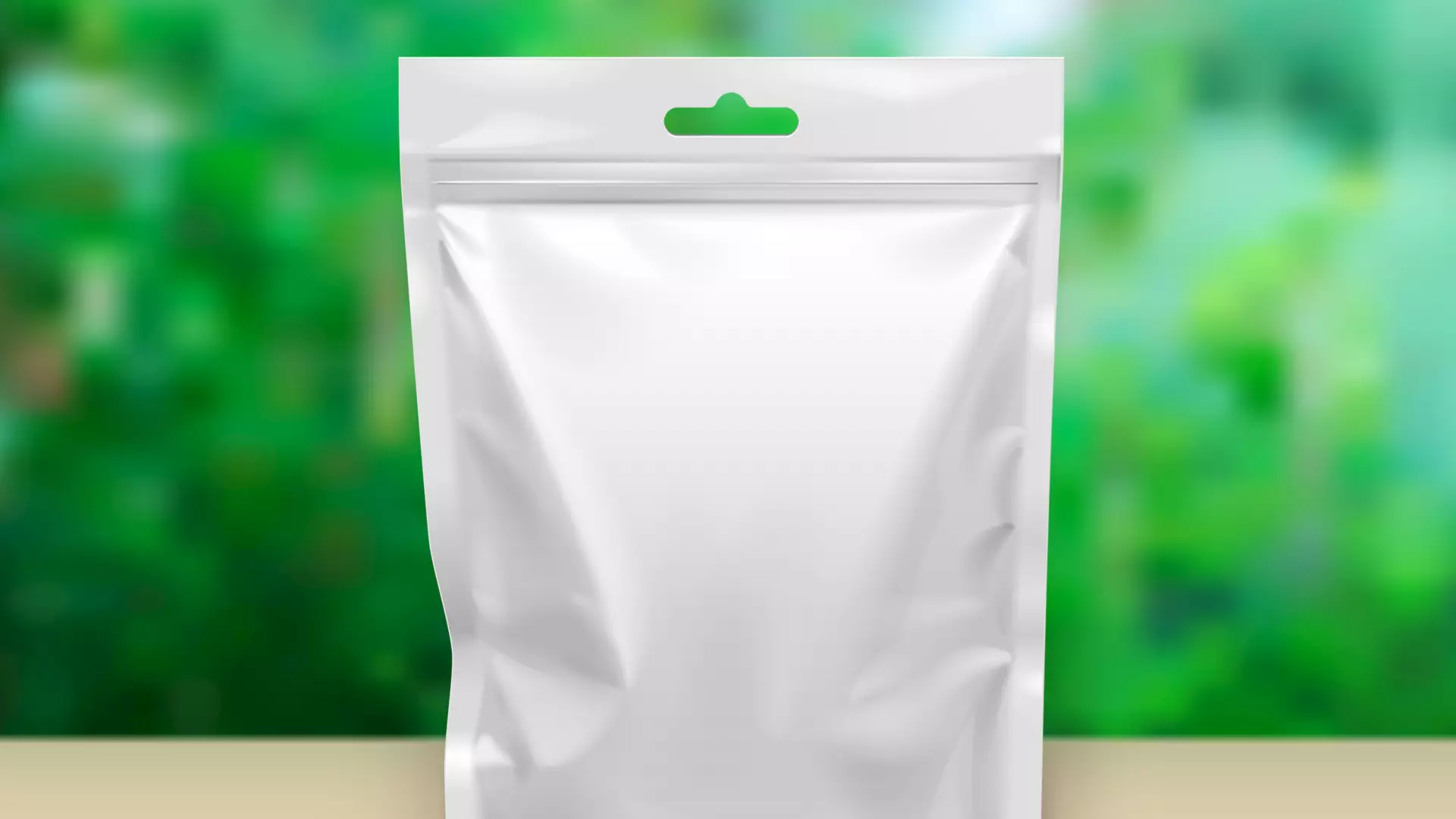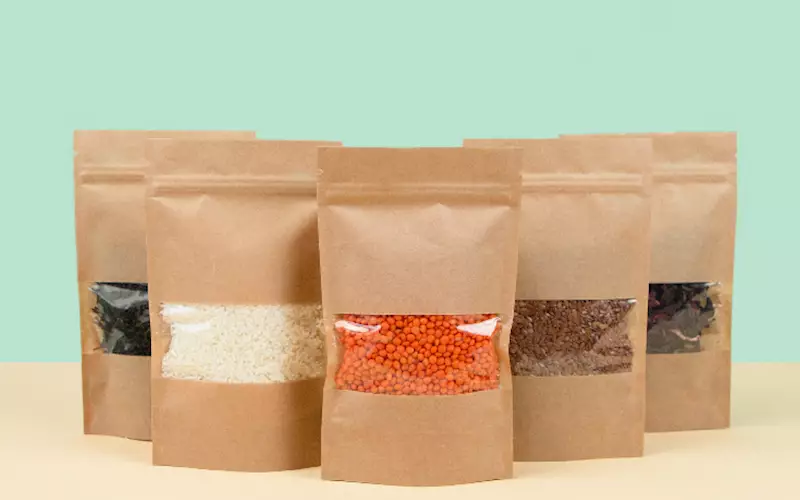Flexible packaging market size to exceed USD 325.6 billion by 2030
The food and beverages aisle in the supermarkets is filled with a variety of packaging structures including cartons of milk, square boxes of cereal, glass jars of peanut butter, and bags of chips. These packaging techniques have been popular for years, but things are slowly changing in the packaging industry all thanks to the advent of flexible packaging
06 Oct 2021 | By Swamini Kulkarni
According to Allied Market Research, the global flexible packaging market is expected to reach USD325.6 billion by 2030, growing at a CAGR of 6.2% from 2021 to 2030. A flexible packaging overview.
The ease of use, resealable structure, and convenient shape of flexible packaging are what lured customers in the beginning. However, its low impact on the environment and introduction of greener, sustainable flexible packaging gained traction compared to conventional cartons and boxes.
How did flexible packaging gain importance?
Although square cartons of milk have satisfied consumers for many years, flexible packaging has offered several benefits to disrupt the packaging industry, especially in the food department. The advent of new materials and the introduction of a wide range of new design concepts to reduce waste gained a huge consumer base. In addition, flexible packaging proved to maintain the freshness of products within.
According to Allied Market Research, the global flexible packaging market is expected to reach USD325.6 billion by 2030, growing at a CAGR of 6.2% from 2021 to 2030. Cost-effectiveness and rise in product shelf-life and an increase in demand from the food & beverage end-use industries coupled with a surge in e-commerce sales are the prime factors that drive the market growth.
Extending the shelf life of food and keeping the product fresh, especially meat appealed to a lot of customers in the food retail industry. Several major companies in the flexible packaging industry launched new materials and packaging designs that can support product freshness. This changed the customer's perception of flexible packaging.
Why choose flexible packaging?
- Convenience and portability
Today’s fast-paced lifestyle demands food packages that offer portability and convenience. Easy to the user and easy to eat products increase the overall sale of the product, which is the major driver of the flexible packaging industry. Studies show that customers are more inclined toward using easy to open, store packages. In addition, some food companies add reseals and child-resistance flexible packaging for supplements and cosmetics.
On the other hand, the lightweight nature of flexible packaging makes it more convenient to handle and a perfect fit for on-the-go consumption compared to traditional packaging methods.
- Storage and transportation
The lightweight nature of flexible packaging makes them ideal for long-distance transportation and helps in reducing the storage spaces while shipping. The transport companies often prefer shipping such packaging as it demands less gas consumption. On the other hand, in grocery stores, storage spaces impact the sale of the product and stand-up pouches demand less space, which encourages brands to switch to flexible packaging.
- Additional shelf life
It is undeniable that plastic consumption and waste is one chronic problem for the environment. However, while looking at plastic consumption, the issue of food wastage is overlooked. On the other hand, plastic flexible packaging helps the environment as it leaves a lesser carbon footprint than other conventional alternatives. Moreover, flexible packaging extends the life of perishable products due to its high-barrier films and airtight seals. This method prevents moisture accumulation and prolongs the shelf life of the good, which ultimately keeps the food away from ending up in a landfill. Customers can re-seal their remaining content and maintain the integrity and freshness for a longer duration.
- Flexibility in design
One of the most important aspects of the food retail industry is attractive packaging design. Flexible packaging offers the use of bright, eye-catching colours and graphics, which encourages 360-degree branding. This helps the brands to stand out in the supermarkets or grocery stores. Moreover, it helps in redefining the image of the brand.
Appeal for green, eco-friendly flexible packaging
Flexible packaging gained popularity due to several environmental advantages compared to other packaging types. With flexible packaging, brands can save packaging costs and reduce the overall use of material waste. Moreover, with the advancements in technologies, flexible packaging is more concerned about environmental impact.
Recently, UFlex, India’s largest multinational flexible packaging material and solution company, and other companies including Hoffer Plastic and Mespack collaborated to develop a recyclable solution for flexible hot pouches. The collaboration was aimed to address the issues with the full recyclability of hot-fill pouches for ready-to-eat foods. The companies launched new Recycle Ready Single Material PP-based flexible packaging that integrated OPP and CPP layered structures that offer improved barrier properties, longer shelf life, and heat seal-ability for unrefrigerated food storage.
Similarly, ProAmpac, the leading company in the flexible packaging industry announced the launch of R-2000D, a new addition to polyethylene-based structures. The R-20000D offers a high barrier to extend the shelf-life of dry products and it has been tested for polyethylene store-drop-off recycling.
Apart from this, several recent product launches in the flexible packaging industry have showcased eco-friendly options. Bobst, a leading company in the packaging industry, has launched Generation 2.0 samples for high barrier flexible packaging solutions that are specially developed for recyclability. Bobst and its partners have been working on packaging structures to replace non-recyclable high barrier multi-material structures with mono-material alternatives.
The environmental benefits of flexible packaging are linked to financial advantages due to less use of plastic materials, lower weight in the supply chain. These financial benefits have promoted recyclability and eco-friendliness of flexible packaging.

Sustainability in flexible packaging
Over the last few years, more and more brands are moving toward sustainable packaging to meet consumer demand and stay ahead of the governmental regulations to be more environmentally conscious and reduce single-use plastic in packaging.
Stand-up pouches are the most popular and fast-growing format in the flexible packaging market. They are not just convenient for customers but they require less energy to produce and leave a lower carbon footprint. Having PET facestocks on labels, these stand-up pouches enable fewer packaging components than the conventional methods and involve less labour to package a product.
This is extremely beneficial for brands to tap into sustainability marketing as these packages involve no plastic bottles, lids, or seals. Stand-up pouches are easy to print intriguing lines and designs to attract customers and offer a fine-finished look on the shelf at a relatively lower cost.
The advent of digital printing
This is the era of digital printing and conventional packaging methods struggle to adapt to this trend. Shorter runs, customisation, and greater sustainability are the major benefits of digital printing that help packages to stand out from other brands.
Digital printing offers consumer goods brands the edge to execute high-impact graphics for shelf appeal and maximum branding. As customers are constantly looking for something new and better experiences, digital printing offers customisation on a whole new level. Whether the package is small or large, digital printing offers unique and personalised packaging which is what the packaging industry has been lacking. The advancements in printing methods, the evolution of material science, and developments in machinery open new opportunities in digital printing to satisfy customer demands.
As flexible packaging is truly about functionality, digital printing is the next big thing in the industry.
Major trends in the flexible packaging industry
The packaging industry is one of the major consumers of single-use plastic. Thus, the pressure for pushing for less single-use plastic drives the flexible packaging industry. Both packaging value chain players and customers aim to reduce plastic waste. Before the Covid-19 pandemic, plastic de-selection was implemented at several retailers across the world, especially in Europe.
The market growth of e-commerce since the Covid-19 outbreak is baffling. With the growth of e-commerce, the need for convenience has shaped new expectations in B2B and B2C industries. These e-commerce packages demand better impact and puncture resistance as they are handled by more people. Especially in the fresh meat packaging, a small leak could hamper the quality of e-grocery deliveries. Careless handling and poor packaging material could hamper the brand and create dissatisfaction among consumers. All these issues can be solved with the use of innovative materials in flexible packaging.
The pressure to develop eco-friendly and sustainable packaging will continue to drive innovation in the flexible packaging industry. Several companies have already collaborated to harness the power of eco-friendly and puncture-resistant materials that offer increased shelf life and sustainability to meet customer expectations regarding packaging.
The barrier properties of flexible packaging are under inspection over the last few years. As these barriers offer better contamination protection while using fewer materials, their applications and investment in R&D have increased. On the other hand, adhesives are other aspects that became popular in flexible packaging. From general-purpose sealing to dual oven-friendly lidding, adhesives offer improvements in containing liquid products and help brands meet customer demands.
In the future, the flexible packaging industry would be driven by convenience, functionality, and sustainability. The variations and new technological innovations in these trends gain traction and help customers to access fresh, untampered products.
Swamini Kulkarni holds a bachelor’s degree in Instrumentation and Control Engineering from Pune University, and works as a content writer.
About Allied Market Research's global flexible packaging market report
Allied Market Research (AMR) is a market research and business-consulting firm of Allied Analytics LLP, based in Portland, Oregon. AMR offers market research reports, business solutions, consulting services, and insights on markets across 11 industry verticals.
Adopting extensive research methodologies, AMR is instrumental in helping its clients to make strategic business decisions and achieve sustainable growth in their market domains. The company is equipped with skilled analysts and experts, and have a wide experience of working with many Fortune 500 companies and small & medium enterprises.
The flexible packaging report covers Covid-19 impact on the market along with recent trends, dynamics, and strategies adopted by market players and gives insights about recent activities and global scenario of the market.











 See All
See All